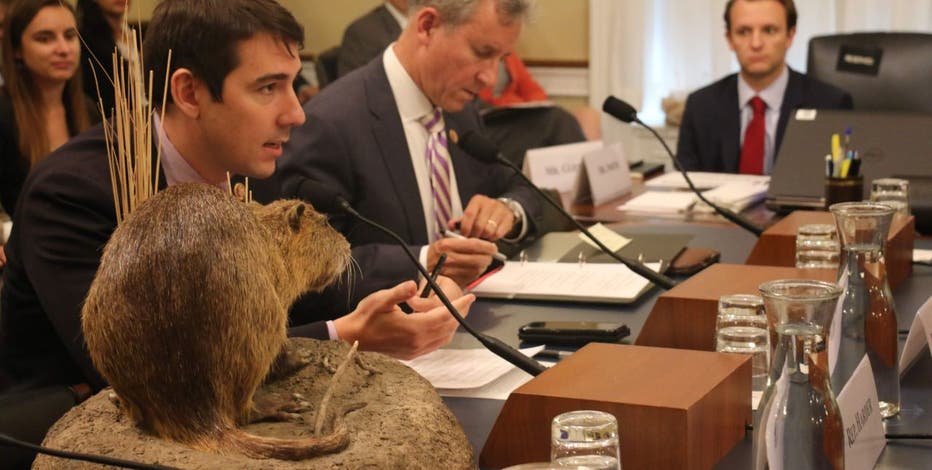Why drain the whole swamp when you can just eradicate the giant invasive rats?
Rep. Josh Harder, a California Democrat, brought a dead nutria — commonly referred to as a “swamp rat” — to a congressional hearing this week as he sought support for a bill that would direct $7 million to help eradicate the invasive rodent species from his state.
That money would be on top of $8.5 million state wildlife officials said they were granted in May for three years of combating swamp rats. But it’ll be cheaper to deal with them sooner rather than later, according to Harder.

Representative Josh Harder (CA-10) today brought a taxidermy nutria to a hearing to illustrate the scale of the threat posed by the invasive species and the importance of his legislation to eradicate it. Rep. Harder’s bill would revive an expired pro
Native to South America, nutria have been discovered in six California counties since 2017, according to the state’s Department of Fish and Wildlife. They weigh 10-20 pounds and eat as much as a quarter of their body weight in food each day.
The market value of agricultural production in California’s central valley — where the swamp rats have been discovered — is close to $29 billion, The Associated Press reported.
The swamp rats reproduce rapidly, breeding up to three times per year with as many as 13 young per litter, according to state wildlife officials.

This May 18, 2018, remote camera image provided by the California Department of Fish and Wildlife shows nutria in Merced County, Calif. With $10 million in state funding, the Department of Fish and Wildlife is preparing to deploy new tactics in its e
Harder said California could be plagued with 250,000 swamp rats in five years if no action is taken.
“Nutria can destroy crops. They destroy almond trees as well as irrigation canals,” he testified during a congressional hearing this week. “They can even cause flooding because they burrow into our water control systems.”
Nutria are about five times the size of muskrats, but smaller than beavers, which are both native to California. The invasive swamp rats are identified by their white whiskers, rounded rat-like tail, partially-webbed feet and bright orange teeth the Los Angeles Times has described as “nacho cheese-colored.”

his photo taken Sept. 12, 2019, shows the head of a dead frozen nutria with prominent orange teeth that will be taken to a laboratory for a necropsy in Los Banos, Calif. With $10 million in state funding, the Department of Fish and Wildlife is prepar
In addition to threatening crops and wetlands, the swamp rats can host tuberculosis and septicemia and carry tapeworms.
California isn’t the only place in the U.S. nutria have tried to call home. Officials estimate they damaged more than 100,000 coastal acres in Louisiana, and eradicating them has cost $24 million since 2002. In Maryland’s Chesapeake Bay, control efforts have been underway since the 1950s. A 2003 law authorized a five-year push with $4 million per year to eliminate the swamp rats there.
Harder’s bill would revive that program from Maryland, which successfully brought in U.S. Department of Agriculture officials to help eradication efforts.

No comments:
Post a Comment